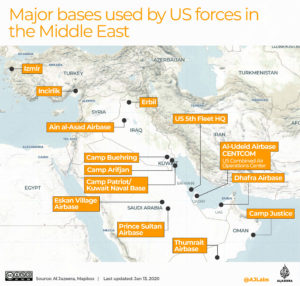Raytheon Technologies and Rafael Advanced Defense Systems have signed today a joint venture to establish a production facility for the Iron Dome Weapon System in the United States. The new partnership, called Raytheon RAFAEL Area Protection Systems, anticipates finalizing a site location before the end of the year. This will be the first Iron Dome all-up-round facility outside of Israel.
The U.S. production facility will provide Israel the ability to finance the acquisition of Iron Dome batteries, and Tamir missile interceptor reloads with U.S. military support. It will also provide the U.S. Department of Defense and allies across the globe to obtain the Iron Dome system for the defense of their service members and critical infrastructure. “We have long partnered on U.S. production of Iron Dome and are pleased to increase manufacturing and bring SkyHunter to the U.S.,” said Brig. Gen. (res.) Pini Yungman, executive vice president for Air and Missile Defense of Rafael Advanced Defense Systems.
The majority of Tamir missile components are already procured through the Raytheon Missiles & Defense supply chain in the United States. The new facility will produce both the Iron Dome Weapon System, which consists of the Tamir interceptor and launcher, and the SkyHunter missile, a U.S. derivative of Tamir. The SkyHunter addresses component and system changes required to meet U.S. certification and regulation but otherwise is identical to Israel’s Tamir, in system interfaces and performance. Both Tamir and SkyHunter intercept incoming cruise missiles, unmanned aerial systems, and short-range targets such as rockets, artillery, mortars, and other aerial threats.
First deployed in 2011, Rafael’s Iron Dome has become one of the symbols of Israel’s defense innovation, for its capability to defeat thousands of rocket attacks launched at Israel since 2011. Today, some 10 batteries are operated with Israel’s Air Force Air Defense Command, five by the regular forces, and five with the reserve component. The Israeli Navy is also fielding a naval version of the Iron Dome called ‘C-Dome’ on its newest Magen corvettes, tasked with safeguarding Israel’s offshore gas platforms in the Eastern Mediterranean.

Iron Dome detects, assesses, and intercepts a variety of shorter-range targets such as rockets, artillery, and mortars. The system has also been tested and proved its capability to intercept unmanned aerial vehicles and mortar rounds. It is effective day or night and in all weather conditions, including low clouds, rain, dust storms, and fog. It features a first-of-its-kind multi-mission launcher designed to fire a variety of interceptor missiles.
Iron Dome’s Tamir missile knocks down incoming threats launched from ranges of 4-70 km. Tamir missiles feature electro-optical sensors and steering fins with proximity fuze blast warheads. The interceptor has also been validated against unmanned aerial vehicles, and countering rockets, mortars, and missiles (C-RAM).
Ten Iron Dome batteries already protect the citizens and infrastructure of Israel, with each battery comprising three to four stationary launchers, 20 Tamir missiles, and a battlefield radar. Each of the batteries can defend up to nearly 150 square kilometers and are strategically placed around cities to intercept threats headed toward populated areas. The intelligent Iron Dome system ignores incoming threats it determines will land in uninhabited areas, thereby minimizing unnecessary defensive launches and lowering operation costs.

Given interest by the U.S. and several other nations in Iron Dome’s unique capabilities, Raytheon Missiles & Defense has introduced a US-made variant of the system dubbed ‘SkyHunter’. In 2019, the U.S. Army announced its intent to buy two Iron Dome batteries to fill a need for an interim capability. The U.S. Army has chosen Iron Dome as an interim capability to counter cruise missiles. At the same time, it continues to develop a future Indirect Fires Protection Capability (IFPC) to counter those threats as well as enemy UAS and RAM. The acquisition, mandated by Congress, will be used to acquire systems that will protect U.S. forces overseas from rocket and missile attacks.
AN/TPY-2 radars are operating in the Middle East by the U.S. Army, the UAE, and Saudi Arabia. A document guiding the joint operations of US THAAD and Israeli Iron Dome was signed last week by the U.S. and Israeli air forces, Navy and Army. The agreement addressed the requirements for the joint operation of the two systems in case of an emergency in Israel. The U.S. has stationed AN/TPY-2 radar in Israel.
from Defense Update: https://ift.tt/30rDkPE
via Defense News

No comments: